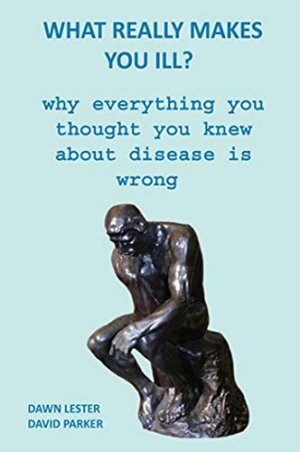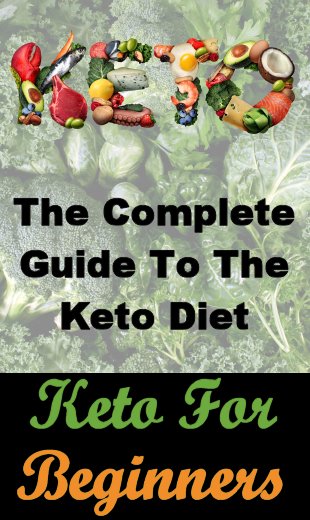My Thoughts On What Really Makes You Ill
This book review is going to be challenging, but nowhere near as challenging as reading What Really Makes You Ill?: Why Everything You Thought You Knew About Disease Is Wrong is.
The book itself is challenging for two reasons
Firstly, it’s long – almost 800 pages. I think the only other two books I’ve read that have been this long were Noble House by James Clavell and Lord Of The Rings by JRR Tolkien. (To be fair, I never went to college or university, where it’s possible I would have come across similarly lengthy books.)
And secondly, the subject matter is going to force you to confront almost everything you thought you knew.
And of course the latter will depend on how far along this journey you are. If you’re at the stage where you believe everything you are told about western medicine, then it’s going to be a tough read, assuming you stay the course.
The fact is, you are probably going to instinctively react negatively to a lot of what the book says, because it goes against pretty much everything that you have been told about allopathic medicine.
However, if you are already some way along this path, then it’s going to be an easier read – but not easy.
I started reading about health issues over a decade ago, and every day I learn something new.
This journey was somewhat easy for me in a way because I’d seen evidence that some of what I’d previously believed wasn’t exactly correct. Having said that, there was still much in this book that was hard to get my head around.
So, let’s start with a look at the chapter headings:
- A Prescription for Illness: Dying to be Healthy
- Vaccinations: Ineffective and Dangerous
- The Germ Theory: A Deadly Fallacy
- ‘Infectious’ Diseases: Dispelling the Myths
- Animals & Diseases: More Medical Myths
- Poisoning The Planet: Science Gone Awry
- ‘Non-Infectious’ Diseases: More Medical Misconceptions
- Global Issues: The Wider Perspective
- Vested Interests & The Agenda for Control
- The Real Nature and Causes of Illness
If you want to see a more detailed list of what the book discusses, here is a screenshot taken from Amazon’s Look Inside feature:
As you can immediately see, there are some topics that are going to be controversial. Vaccination is an obvious one, but then germ theory is another.
You may not know it by that term, but it’s the basis for almost all of western medicine – the idea that specific “germs” (e.g. bacteria, viruses) cause specific illnesses.
You can thank Louis Pasteur for this, for the most part, but during his day, there was a completely different theory about illness that was largely propounded by Antoine Béchamp. (You can find a short review of an excellent book about their rivalry here.)
The alternative theory has come to be known as terrain theory, and it appears to me that this explains much that germ theory cannot.
And the What Makes You Really Ill book addresses this in great detail.
The book talks about many of the diseases that are recognized these days, and goes on to explain how they are not what we have been told.
You’ll learn about the innate dangers of prescription drugs, including the much-vaunted antibiotics.
At this stage, I can almost hear you say that the book must be total quackery, but that speaks more to the overwhelming deluge of information published by and on behalf of the pharmaceutical industry than anything else. (Chapter 9 discusses the issue of vested interests.)
In the chapter on poisoning, it also talks about both ionizing and non-ionizing radiation, which is something that has been a relatively hot topic recently. (BTW, the establishment definition of ‘poison’ refers to “any substance that irritates, damages, or impairs the activity of the body’s tissues”, which was a much broader definition than I expected.)
And if you want to read more about the effects of electromagnetic radiation, I can highly recommend the book The Invisible Rainbow by Arthur Firstenburg.
The book does cover other subjects too, specifically a variety of global initiatives that are claimed to address world health and economic issues. However, the book’s central theme is that because all of these large organizations are still focused on the germ theory, and all that entails, rather than the true cause of health issues, then the solutions they are planning will fail.
And here’s one topic that is going to hurt your brain: the Paracelsus principle. I’m sure you’ve been told that the dose makes the poison, but this book disagrees with this approach: if a substance is toxic, then it’s toxic. At any level, it will cause harm, even if you cannot detect it.
As Herbert Sheldon puts it in his book Natural Hygiene, “Poisons are such qualitatively and not merely quantitatively.”
This very principle is behind so much of western medicine. For example, there are occasional studies that claim to determine the maximum safe dose of certain ingredients in vaccines. And yet, if that ingredient is inherently toxic, such as mercury (which is still present in some vaccines regardless of what you might have been told), then there is no safe limit.
It turns out a large number of devastating effects have been discovered to result from very low exposure levels, many of which are significantly lower than levels that have been “scientifically” determined to be safe.
And if you make it as far as Chapter 10, you’ll discover answers to the questions posed in the book’s title. In summary, the four key factors are nutrition, toxic exposure, EM radiation exposure, and stress. But these subheadings in no way replace the need to read that chapter (which includes discussion of something that was merely a joke in the James Bond movie Never Say Never Again but which may be the key to health – free radicals).
Conclusion
It’s difficult really to summarize such a massive book in a short article, but here’s what I would say: if you are open-minded and concerned about hearing a different side to the story, then you’ll get a lot out of it.
And if you looked at the list of chapter headings and immediately decided that it’s all BS, then it’s unlikely you’ll make it all the way through, which would be a shame.
So, my view is that there are many people who ought to read this book, and I include doctors in that. They won’t want to, because it goes against everything they were taught in medical school (which is funded to a significant degree by the pharmaceutical industry, by the way).
The book does back up everything it says with references to a ton of articles and books – 36 pages of them.
And while you may look at the authors and say they are not doctors, I would see that as a good thing, because they are outside of the confines of western medicine and have not looked at these issues with the same preconceptions. All they have done is follow the data, as all good scientists should.
It is, as I said, a mammoth read, but well worth it. Just prepare to have your beliefs shattered.
One final point. The book is available in paperback and as a Kindle book. I opted for the Kindle version because I prefer the convenience, but there are two more factors that I think are relevant here.
Firstly, the paperback weighs in at over two pounds, which is a lot to carry around and hold.
And secondly, it’s much easier to highlight passages and make notes on Kindle. (BTW, I only learned recently that you can go to this Amazon page and see all of your notes and highlights from all of your Kindle books. And from there, you can quickly copy and paste them into something like a word processor or notepad.)
Additional Resources
These are suggestions for those who wish to delve deeper into any of the above:
- The Invisible Rainbow
- What Really Makes You Ill?: Why Everything You Thought You Knew About Disease Is Wrong









